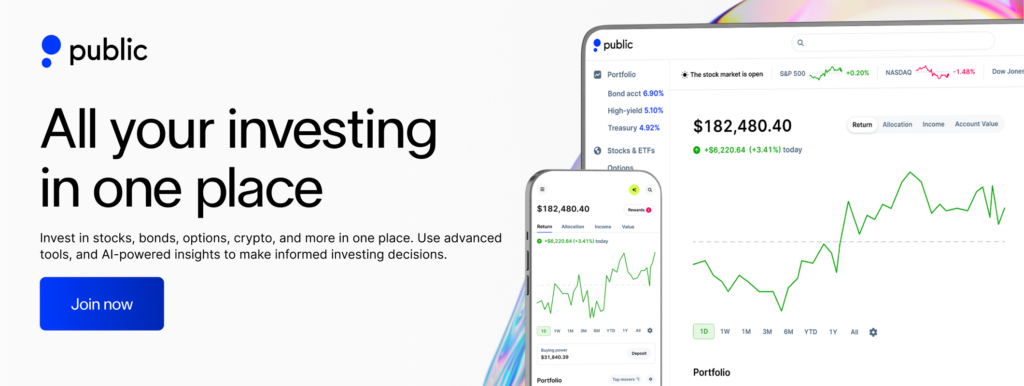What is S&P 500?
The S&P 500, or the Standard & Poor’s 500 Index, is one of the most recognized and widely followed stock market indices in the world. A market index is an investment portfolio that aims to represent a certain segment of the stock market.
The S&P 500 tracks the performance of about 500 high-value companies in the United States and therefore aims to represent the performance of the U.S stock market and overall U.S. economy. Since so many companies are included in the S&P 500 index, many consider it a great way to diversify an investment portfolio.
History of the S&P 500
Though the S&P 500 is popular today, the index fund was not the first of its kind. The Dow Jones Industrial Average (DIJA) index predates the inception of the S&P 500 by many years. DIJA was created in 1896 and comprised 12 companies that represented the industrial sector.
It wasn’t until 1926 that the concept of the S&P 500 began when the Standard Statistics Company created an index that included only 90 stocks. At the time, it was called the Composite Index.
In 1941, Standard Statistics merged with Poors Publishing to become Standard & Poors and established itself as a company that specializes in providing indexes and market data. Then, in 1957, Standard & Poors formalized the S&P 500 index we see today. The index included about 500 companies compared to the original 90.
Over time the S&P 500 has accurately reflected the U.S. economy; the index saw spikes in value during economic booms and dips in value during recessions. Since its inception, the S&P has provided returns greater than other major assets and is seen as a safer investment throughout the finance community.
What companies are included in the S&P 500?
A committee evaluates companies quarterly and includes in the S&P only those companies that fulfill a long list of criteria.
Eligibility Criteria:
- The company must be based in the U.S.
- Must have a primary listing on one of the US exchanges.
- The company had its IPO at least 1 year earlier.
- The company must have a market capitalization of at least US$ 18.0 billion or more.
- The stock should have adequate liquidity and reasonable price, with a minimum monthly trading volume of 250,000 shares in each of the six months preceding evaluation.
Due to this criterion, the S&P 500 is known for representing only large market capitalization or large-cap companies. Also, the S&P 500 is considered a capitalization-weighted index. In simpler words, the companies with the largest market cap have a larger effect on the overall value of the S&P 500.
The S&P 500 uses a market-cap weighted methodology to accurately reflect market behavior. Each company’s weight is determined by:
Weight of company A = (Free float – Adjusted market cap of company A) / (Total free float – Adjusted market cap of all companies)
Free float – adjusted market cap is calculated by multiplying the share price by the number of shares outstanding and adjusting for the percentage available to public investors.
The overall index level is computed as:
Index level = (Total free float – adjusted market cap) / Divisor
The divisor is a proprietary figure, adjusted for corporate actions like stock stock splits, dividends, to maintain consistency.
Let’s take an example:
If company A has a $200 billion cap and company B has a $100 billion cap, the total is $300 billion. Consequently, company A’s weight is about 66.67%, and company B’s is 33.33%, meaning company A’s performance has roughly twice the impact on the index.
Why this calculation matters
This weighting and calculation approach allows you to see the S&P 500 as a reflection of the aggregate market value of its constituents rather than a simple average of their performances. It highlights how larger companies can drive overall market trends while still offering a diversified view of the U.S. economy.
How to invest in the S&P 500
Most major brokerages and investing platforms offer the opportunity to invest in an S&P 500 index fund, including Public.
Select Your Investment Vehicle:
- Exchange-Traded Funds (ETFs): ETFs are one of the easiest and most cost-effective ways to invest in the S&P 500. ETFs like the SPDR S&P 500 ETF Trust (SPY), Vanguard S&P 500 ETF (VOO), and iShares Core S&P 500 ETF (IVV) are traded on exchanges, just like stocks, and closely track the index’s performance.
- Index Funds: If you prefer a more passive investment approach, consider index funds that track the S&P 500. These funds, such as the Vanguard 500 Index Fund (VFIAX) and the Fidelity 500 Index Fund (FXAIX), offer low-expense ratios and are designed to mirror the composition and performance of the index.
Average returns of the S&P 500
As mentioned, the S&P 500 follows the same patterns of the U.S. economy and therefore experiences periods of growth and depression.
For example, after the financial crisis in 2008, the S&P saw a decline in value of about 37%. On the contrary, in 2019 the S&P saw an increase in value of about 31%.
That being said, from its inception in 1957 up until the end of 2019, the index has seen an annualized average return of about 10%.
This tends to be higher than the returns of other assets, but like other investments, market timing is everything; if someone invests at the wrong time the returns may not be so favorable.
Potential risks associated with S&P 500 investments
Investing in the S&P 500 comes with potential risks, including market risk, sector risk, and economic risk.
- Market risk involves overall stock market volatility due to economic downturns or geopolitical events.
- Sector risk arises when specific sectors within the index, like technology or healthcare, underperform.
- Economic risks, such as inflation, rising interest rates, and currency fluctuations, can impact company profits and, consequently, the index.
Despite these risks, the S&P 500 is favored for its diversification and historical long-term growth, making it a staple in investment portfolios.
Conclusion
The S&P 500 includes many large-cap companies from various business sectors that fulfill a very specific list of criteria. Because the S&P represents so many different industries and high-value companies, it has historically been successful in reflecting the various ups and downs of the U.S. economy and stock market.
While the performance of the S&P varies from year to year, the average annualized return since its inception in 1957 is 10%. While the S&P 500 is seen as a good investment for someone who is more risk-averse, investing in the S&P is not risk-free. Timing is everything in the investing world, and this is no exception.
Frequently Asked Questions (FAQs)
What sectors are included in the S&P 500?
The companies within the S&P aim to represent 11 business sectors: Energy, Real Estate, Utilities, Communication Services, Materials, Industrials, Consumer Staples, Health Care, Financials, Consumer Discretionary, and Technology.
Is the S&P 500 a good option for beginner investors?
The S&P 500 can be suitable for beginners due to its broad diversification, offering exposure to many large U.S. companies with one investment. However, always research or consult a financial advisor before investing.
How is the weighting of each company determined in the S&P 500 index?
How is the weighting of each company determined in the S&P 500 index? The weighting of each company in the index is calculated by taking the company’s market cap and dividing it by the total market cap of the index.
Company Weighting in S&P 500 = Company market cap / Total of all market caps
What are the top competitors to the S&P 500 index?
The main competitors to the S&P 500 index are the Dow Jones Industrial Average (DJIA) and the Nasdaq Composite. Both indices track different sets of companies, with the DJIA focusing on 30 large-cap U.S. companies and the Nasdaq Composite emphasizing technology and growth-oriented stocks.


